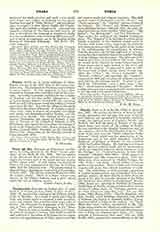

Pineda, JOHN DE, b. in Seville, 1558; d. there, January 27, 1637. He entered the Society of Jesus in 1572, taught philosophy and theology five years in Seville and Cordova, and specialized in Scripture, which he taught for eighteen years at Cordova, Seville, and Madrid. He held the posts of Provost of the professed house and rector of the college of Seville. He was consultor to the Spanish Inquisition, and, in this capacity, visited the chief libraries of Spain. The result of his visits was the “Index Librorum Prohibitorum” (1612), which won the appreciation of the Inquisition and of the chief inquisitor, Cardinal Sandoval, Archbishop of Toledo; it was reedited (1632) for Cardinal Zapata. His learning is evidenced by the nineteen printed works and six manuscripts, chiefly on exegetical subjects, which remain to us of his writings: (I) “Commentariorum in Job Libri tredecim” (Madrid, 1597-1601). Each chapter is paraphrased and fully commented upon. These two folios were often reissued in Madrid, Cologne, Seville, Venice, and Paris. Seven indexes served as guides to the student. Both Catholic and Protestant exegetes still praise this colossal storehouse of erudition. The archaeology, textual criticism, comparison of various interpretations, use of historical data from profane writers, all show Pineda to have been far ahead of his time in scientific criticism of the Bible; (2) “Pri lectio sacra in Cantica Canticorum” (Seville, 1602), issued as a greeting to Cardinal de Guevera, Archbishop of Seville, on the occasion of his visit to the Jesuit college there; (3) “Salomon praevius, sive de rebus Salomonis regis libri octo” (fol., pp. 587; Lyons, 1609; Mainz, 1613). The life, kingdom, wisdom, wealth, royal buildings, character, and death of Solomon are treated in scholarly fashion; five indexes are added as helps to the student. (4) “De C. Plinii loco inter eruditos controverso ex lib. VII. Atque etiam morbus est aliquis per sapientiam mori”. Considerable controversy resulted from his interpretation of Pliny (see Sommervogel, infra). (5) “Cornmentarii in Ecclesiasten, liber unus” (fol., pp. 1224; Seville, 1619), appeared in various editions, as did the commentary on Solomon. The fame he won by his erudition and sanctity is attested in many ways. On a visit to the University of Evora he was greeted by a Latin speech, and a memorial tablet was set up with the legend: Hic Pineda fuit. What astounds one most in the writings of this exegete of the old school is his vast knowledge not merely of Latin, but of Greek and Hebrew.
WALTER DRUM

